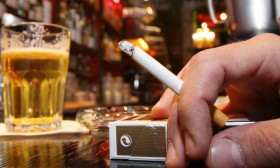Smoking Augments Keloid Formation After Skin Trauma
Introduction
Keloids are abnormal fibrous tissue growths that develop at the site of skin injury, extending beyond the original wound boundaries. They result from excessive collagen deposition during wound healing and are often associated with genetic predisposition, inflammation, and mechanical tension. Recent studies suggest that smoking may exacerbate keloid formation by altering wound healing processes. This article explores the mechanisms by which smoking contributes to keloid development and discusses clinical implications for prevention and treatment.
The Pathophysiology of Keloid Formation
Keloids arise due to dysregulated wound healing, characterized by prolonged inflammation, fibroblast overactivation, and excessive extracellular matrix (ECM) deposition. Key factors in keloid pathogenesis include:
- Genetic susceptibility – Certain populations, particularly those of African, Asian, or Hispanic descent, have a higher predisposition.
- Cytokine dysregulation – Elevated levels of transforming growth factor-beta (TGF-β), interleukin-6 (IL-6), and vascular endothelial growth factor (VEGF) promote fibrosis.
- Mechanical stress – Tension on healing wounds increases fibroblast activity and collagen production.
How Smoking Influences Keloid Development
Cigarette smoke contains thousands of harmful chemicals, including nicotine, carbon monoxide (CO), and reactive oxygen species (ROS), which disrupt normal wound healing and promote fibrosis.
1. Nicotine and Fibroblast Activation
Nicotine binds to nicotinic acetylcholine receptors (nAChRs) on fibroblasts, stimulating excessive collagen synthesis. Studies show that nicotine-treated fibroblasts exhibit increased proliferation and ECM deposition, mimicking keloid-like behavior.
2. Hypoxia and Oxidative Stress
Carbon monoxide in smoke reduces oxygen delivery to healing tissues, creating a hypoxic environment. Hypoxia-inducible factor-1α (HIF-1α) is upregulated, leading to increased VEGF and TGF-β expression—both of which drive fibrosis. Additionally, ROS generated by smoking cause oxidative damage, prolonging inflammation and delaying wound closure.
3. Impaired Immune Response
Smoking suppresses immune function by reducing neutrophil and macrophage activity, impairing bacterial clearance, and increasing infection risk. Chronic infection perpetuates inflammation, further stimulating keloid formation.

4. Altered Angiogenesis
While angiogenesis is essential for wound healing, excessive vascularization contributes to keloid growth. Smoking disrupts endothelial function, leading to abnormal blood vessel formation that sustains fibrotic tissue.
Clinical Evidence Linking Smoking to Keloids
Several clinical observations support the association between smoking and keloid severity:
- Higher recurrence rates – Smokers undergoing keloid excision have increased recurrence compared to non-smokers.
- Larger keloid size – Smokers tend to develop more extensive and symptomatic keloids.
- Delayed wound healing – Smoking prolongs the inflammatory phase, increasing the likelihood of abnormal scarring.
Preventive and Therapeutic Strategies
Given the detrimental effects of smoking on keloid formation, cessation is crucial for at-risk individuals. Additional strategies include:
- Early intervention – Prompt wound care and silicone gel/sheeting to minimize tension.
- Anti-fibrotic treatments – Intralesional corticosteroids, 5-fluorouracil (5-FU), or laser therapy to reduce collagen deposition.
- Targeted therapies – Emerging drugs blocking TGF-β or HIF-1α pathways may benefit smokers with keloids.
Conclusion
Smoking significantly worsens keloid formation by promoting fibroblast hyperactivity, hypoxia, oxidative stress, and immune dysfunction. Patients with a history of keloids or undergoing surgical procedures should be strongly advised to quit smoking to reduce scarring complications. Further research is needed to explore targeted interventions for smokers at high risk of keloid development.
By understanding the molecular interplay between smoking and keloid pathogenesis, healthcare providers can better manage and prevent this challenging dermatologic condition.
Tags: #Keloids #Smoking #WoundHealing #Fibrosis #Dermatology #ScarFormation #Nicotine #TGFbeta #Hypoxia












